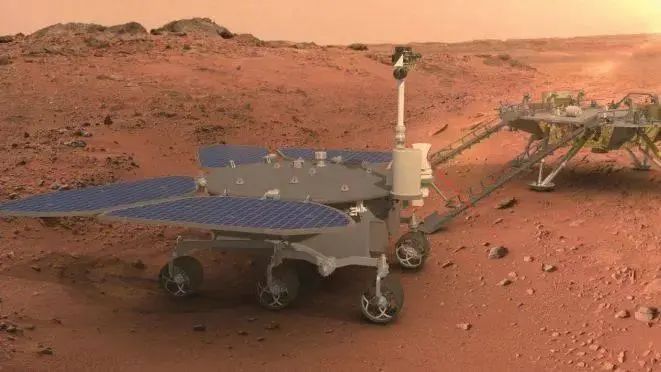China’s first Mars exploration mission, the Tianqi-1 probe, will complete a one-time “around, fall, patrol”, so since its launch in July 2020, every key node has attracted widespread attention. In February, Sky One successfully carried out its third near-fire braking and entered orbit on Mars, meaning it began a months-long “around” process. Subsequent “fall” is the top priority in this task. The latest official announcement by Chinese officials about the Landing of Tian Qiao-1 on Mars was the announcement of China’s first mars rover named Zhurong on space day this year. While no further information has been released on the Tian Qiao-1 landing, the exciting moment should be getting closer, according to China’s National Space Administration’s previously announced plan to land on Mars in mid-May 2021 for a mission.
Sky’s first probe consists of a surround and a landing patrol. The rover will be in orbit on Mars for about three months, and the orbiter’s seven payloads will all be turned on for multi-dimensional exploration of Mars, making it a pre-stop for a subsequent landing. Experts say the entire landing process takes about 9 minutes. The detector needs to reduce its speed from about 4.9 kilometers per second to 0 in nine minutes. The first step in completing this mission depends on Mars’ dense atmosphere.
According to Tan Zhiyun, chief deputy director of the Mars rover at the Space Science and Technology Group, the atmospheric slowdown is subject to high temperature processes, as well as attitude deviations caused by pneumatics, which can adversely affect the deceleration. Once the use of their own pneumatic shape and heat-proof structure to carry the first level of pneumatic deceleration, the speed of Tian Qiao 1 will be successfully reduced by about 90%. Next, it needs to immediately open its own gearbox until the speed drops to less than 100 meters per second, and the variable thrust engine carried by the detector turns on on time and enters the power drop segment.
Mr Tan says the process is about 80-100 seconds. Then, when you reach 100 meters from the surface of Mars, you enter the hover phase. Microwave ranging speed sensors then measure the pair, including optical cameras, 3D laser cameras, to complete ground imaging, and possibly at an altitude of 100 meters to pan, choosing a safer landing zone for landing. When the landing area is determined autonomously, the lander will land on the surface of Mars under the protection of a buffer mechanism and airbags. After that, the landing rover complex will release the Mars rover Zhurong, which is about 1 meter 85 and 240 kg high, to begin the “tour” phase. The design life of Zhurong is three Martian moons, equivalent to about 92 Earth days.



